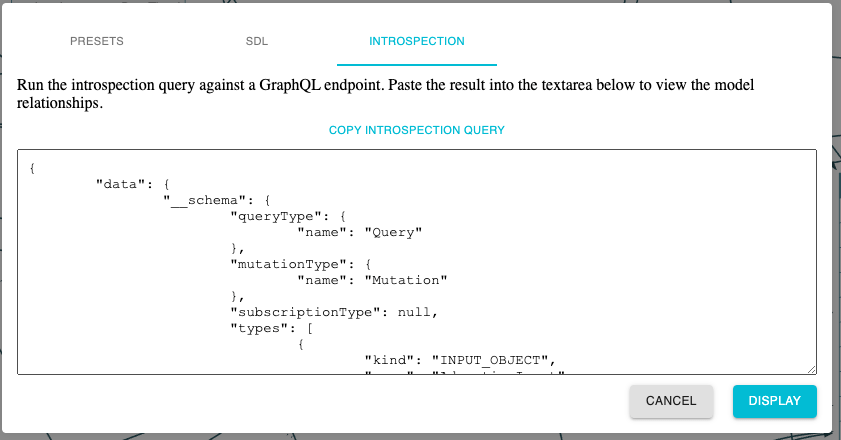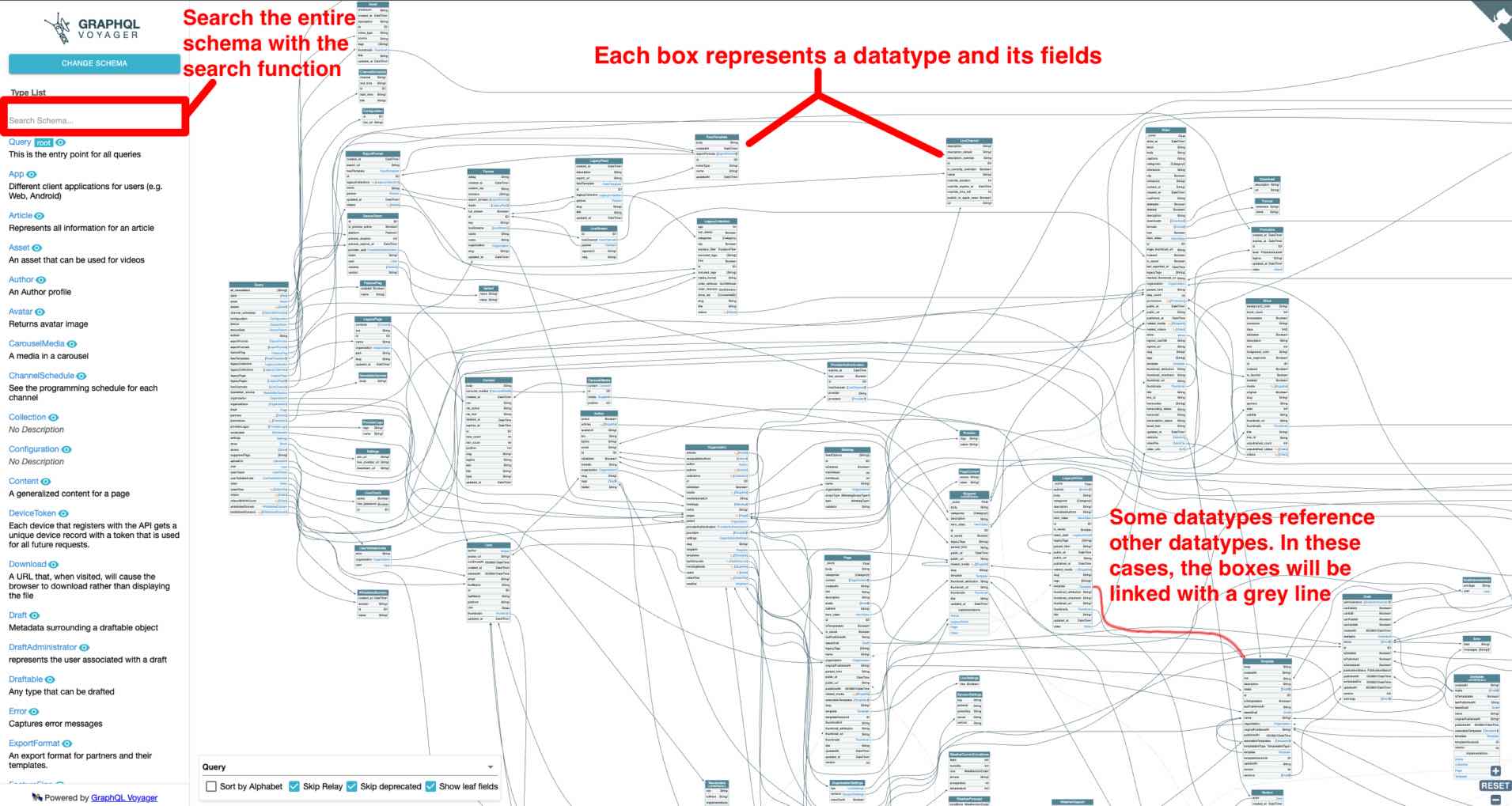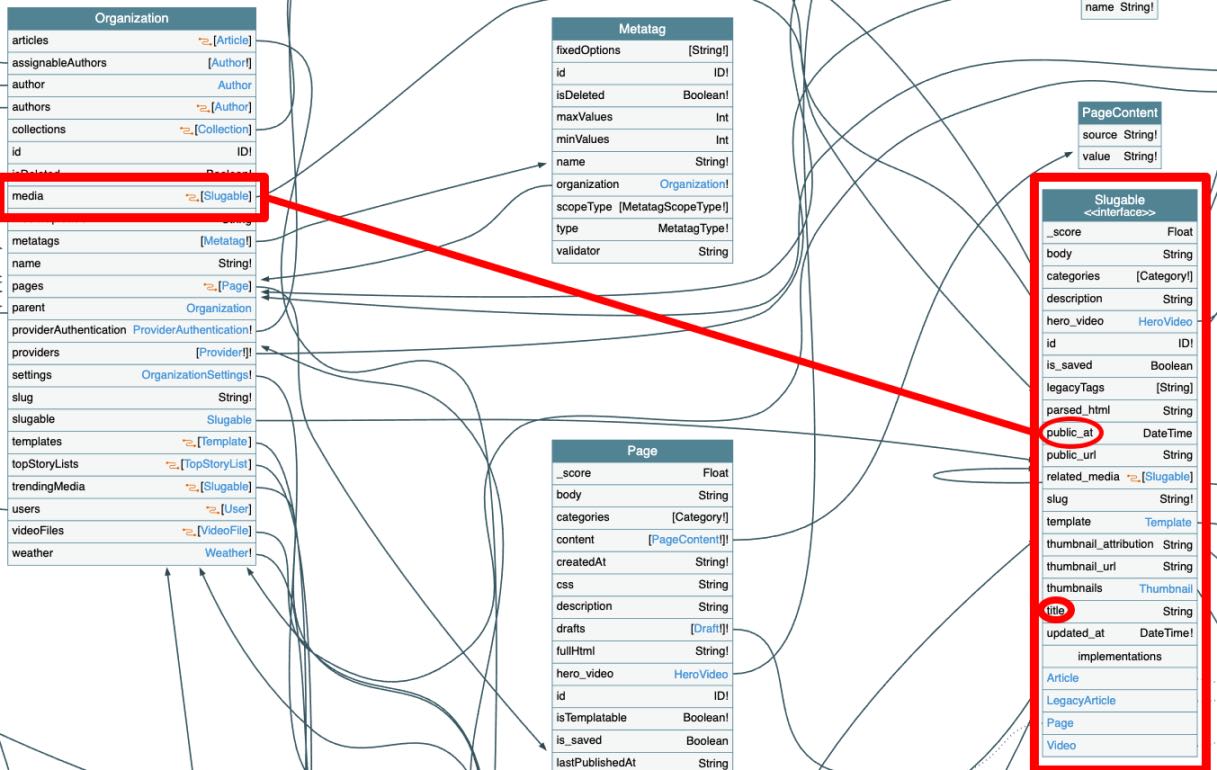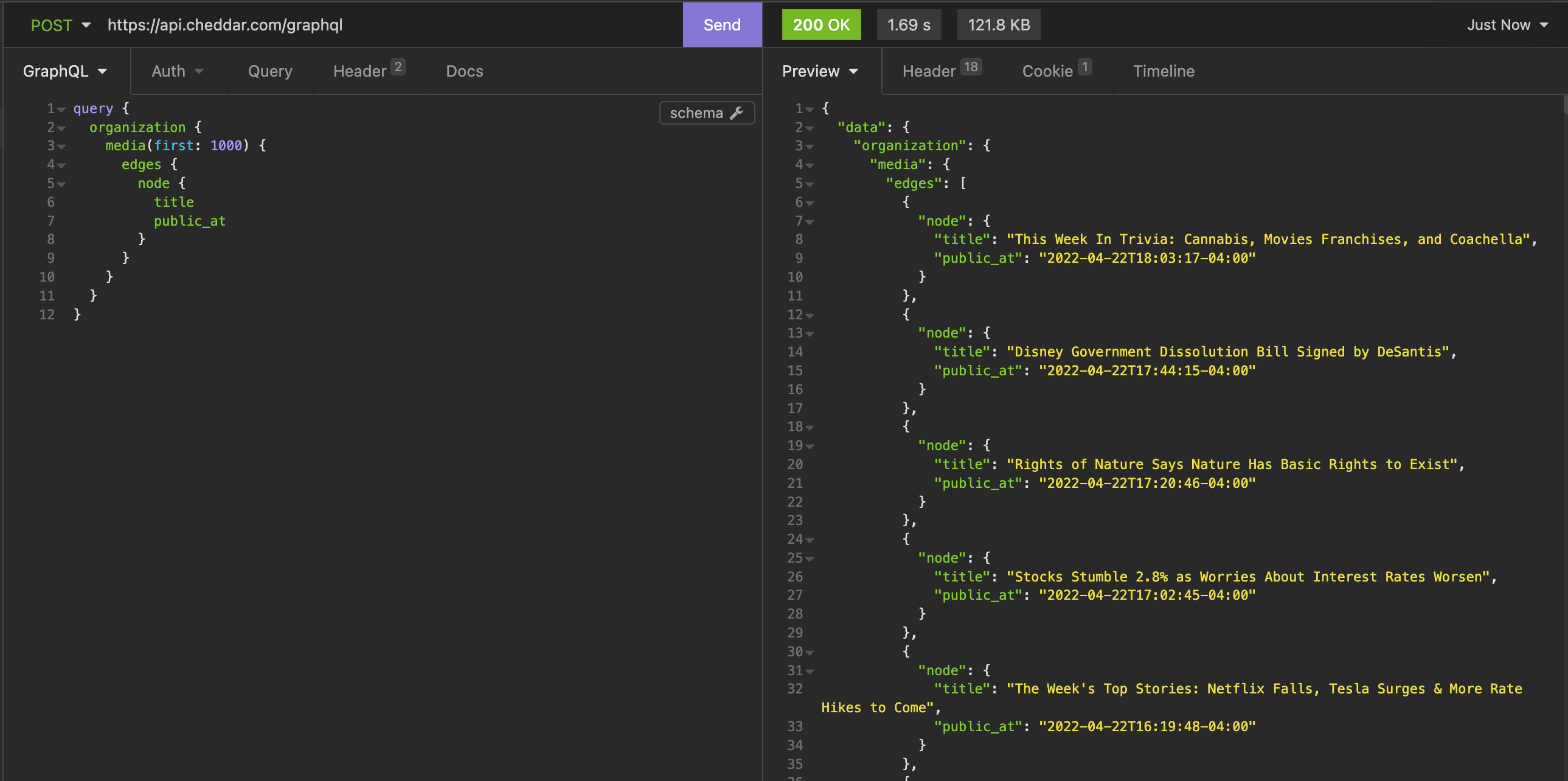Introspection
Understand what introspection is, and how it can help you understand a GraphQL API to take advantage of the features it has to offer before writing any code.
Introspection is when you make a query to the target GraphQL API requesting information about its schema. When done properly, this can provide a whole lot of information about the API and the different queries and mutations it supports.
Just like when working with regular RESTful APIs in the General API scraping section, it's important to learn a bit about the different available features of the GraphQL API (or at least of the query/mutation) you are scraping before actually writing any code.
Not only does becoming comfortable with and understanding the ins and outs of using the API make the development process easier, but it can also sometimes expose features which will return data you'd otherwise be scraping from a different location.
Making the query
! Cheddar website was changed and the below example no longer works there. Nonetheless, the general approach is still viable on some websites even though introspection is disabled on most.
In order to perform introspection on our target website, we just need to make a request to their GraphQL API with this introspection query using Insomnia or another HTTP client that supports GraphQL:
To make a GraphQL query in Insomnia, make sure you've set the HTTP method to POST and the request body type to GraphQL Query.
query {
__schema {
queryType {
name
}
mutationType {
name
}
subscriptionType {
name
}
types {
...FullType
}
directives {
name
description
locations
args {
...InputValue
}
}
}
}
fragment FullType on __Type {
kind
name
description
fields(includeDeprecated: true) {
name
description
args {
...InputValue
}
type {
...TypeRef
}
isDeprecated
deprecationReason
}
inputFields {
...InputValue
}
interfaces {
...TypeRef
}
enumValues(includeDeprecated: true) {
name
description
isDeprecated
deprecationReason
}
possibleTypes {
...TypeRef
}
}
fragment InputValue on __InputValue {
name
description
type {
...TypeRef
}
defaultValue
}
fragment TypeRef on __Type {
kind
name
ofType {
kind
name
ofType {
kind
name
ofType {
kind
name
ofType {
kind
name
ofType {
kind
name
ofType {
kind
name
ofType {
kind
name
}
}
}
}
}
}
}
}
Here's what we got back from the request:

The response body of our introspection query contains a whole lot of useful information about the API, such as the data types defined within it, as well the queries and mutations available for retrieving/changing the data.
Understanding the response
An introspection query's response body size will vary depending on how big the target API is. In our case, what we got back is a 27 thousand line JSON response 🤯 If you just thought to yourself, "Wow, that's a whole lot to sift through! I don't want to look through that!", you are absolutely right. Luckily for us, there is a fantastic online tool called GraphQL Voyager (no install required) which can take this massive JSON response and turn it into a digestable visualization of the API.
Let's copy the response to our clipboard by clicking inside of the response body and pressing CMD + A, then subsequently CMD + C. Now, we'll head over to GraphQL Voyager and click on Change Schema. In the modal, we'll click on the Introspection tab and paste our data into the text area.

Finally, we can click on Display and immediately be shown a visualization of the API:

Now that we have this visualization to work off of, it will be much easier to build a query of our own.
Building a query
In future lessons, we'll be building more complex queries using dynamic variables and advanced features such as fragments; however, for now let's just get our feet wet by using the data we have from GraphQL Voyager to build a simple query.
Right now, our goal is to fetch the 1000 most recent articles on Cheddar. From each article, we'd like to fetch the title and the publish date. After just a bit of digging through the schema, we've come across the media field within the organization type, which has both title and public_at fields - seems to check out!

Cool. Now we know we need to access media through the organization query. The media field also takes in some arguments, of which we will be using the first parameter set to 1000. Let's start writing our query in Insomnia!

While writing our query, we've hit a slight roadblock - the media type doesn't seem to be accepting a title field; however, we are being suggested an edges field. This signifies that Cheddar is using cursor-based relay pagination, and that what is returned from media is actually a Connection type with multiple properties. The edges property contains the list of results we're after, and each result lies within a Node type accessible within edges as node. With this knowledge, we can finish writing our query:
query {
organization {
media(first: 1000) {
edges {
node {
title
public_at
}
}
}
}
}
Sending the query
Let's send it!

Oh, okay. That didn't work. But why?
Rest assured, nothing is wrong with our query. We are most likely just missing an authorization token/parameter. Let's check back on the Cheddar website within our browser to see what types of headers are being sent with the requests there:

The Authorization and X-App-Token headers seem to be our culprits. Of course these values are dynamic, but for testing purposes we can copy them right from the Network tab and use them for our request in Insomnia.

Cool, it worked! Now we know that if we want to scrape this API, we'll likely have to scrape these authorization headers as well in order to not get blocked.
For more information about cookies, headers, and tokens, refer back to this lesson from the previous section of the API scraping course.
Introspection disabled?
If the target website is smart, they will have introspection disabled. One of the most widely used GraphQL development tools is ApolloServer, which automatically disables introspection, so these cases are actually quite common.

In these cases, it is still possible to get some information about the API when using Insomnia or Postman, due to the autocomplete that they provide. If we remember from the Building a query section of this lesson, we were able to receive autocomplete suggestions when we entered a non-existent field into the query. Though this is not as great as seeing an entire visualization of the API in GraphQL Voyager, it can still be quite helpful.
Next up
Next lesson's code-along project will walk you through how to construct a custom GraphQL query for scraping purposes, how to accept input into it, and how to retrieve and output the data.